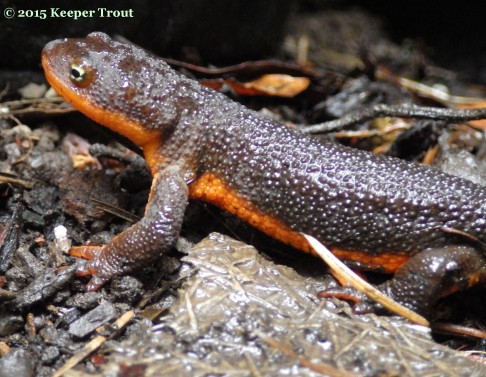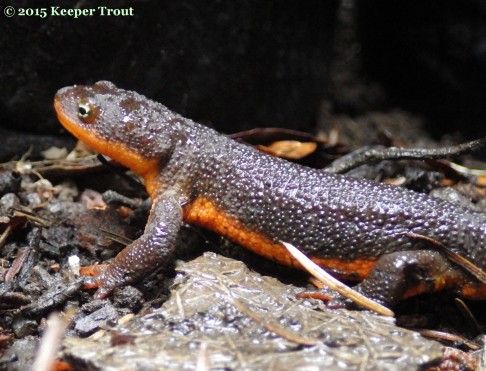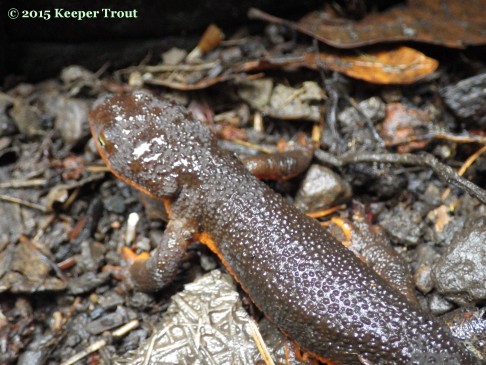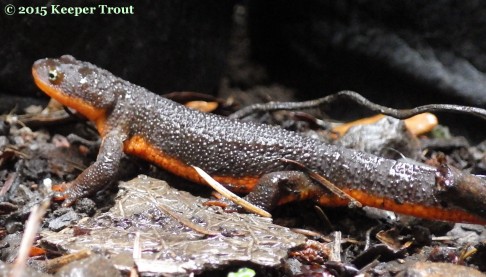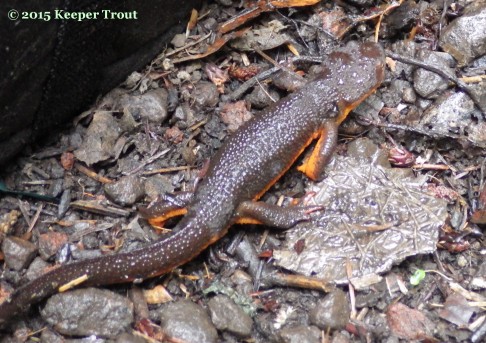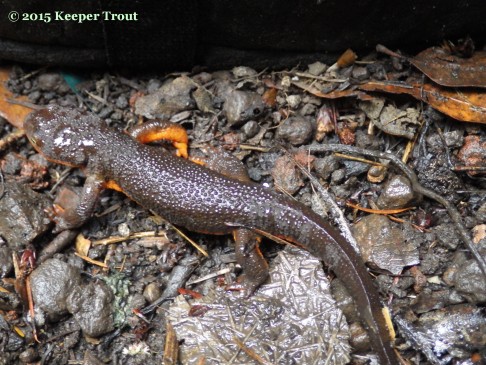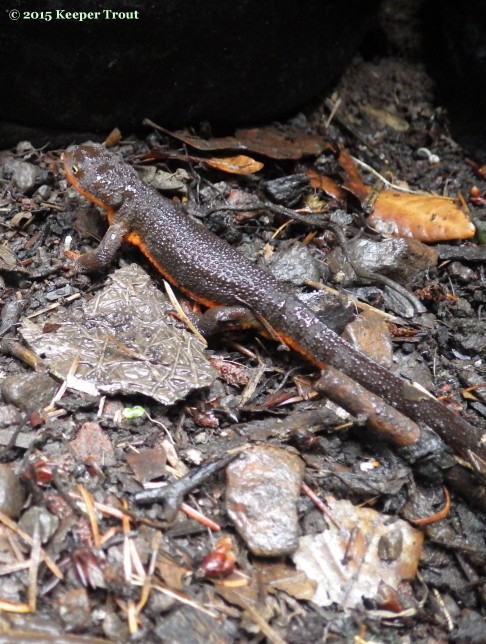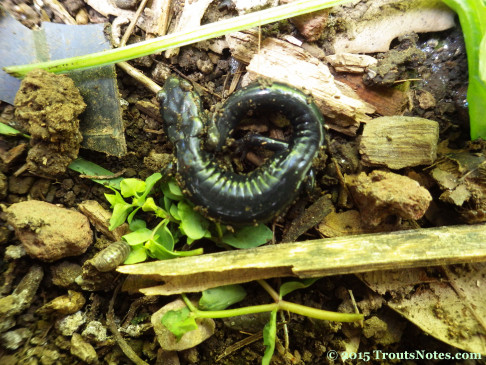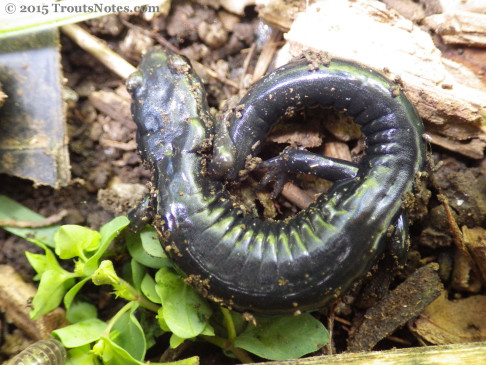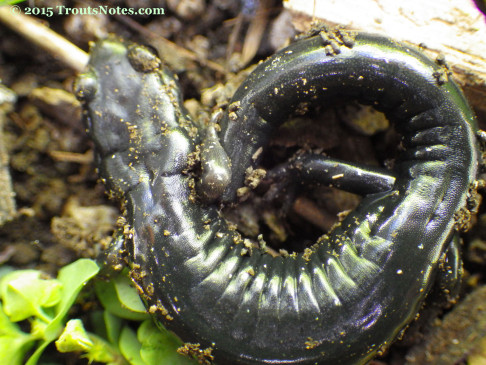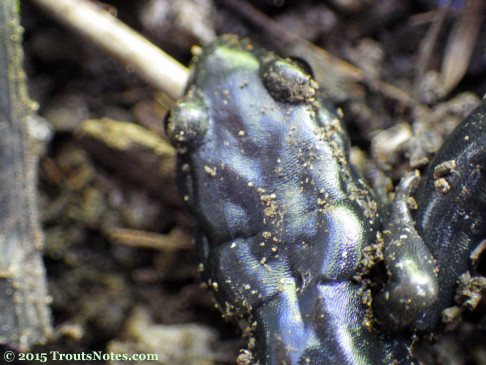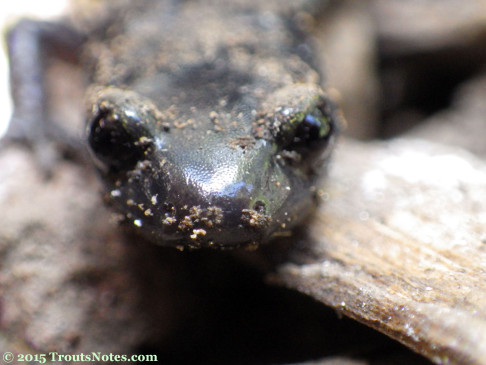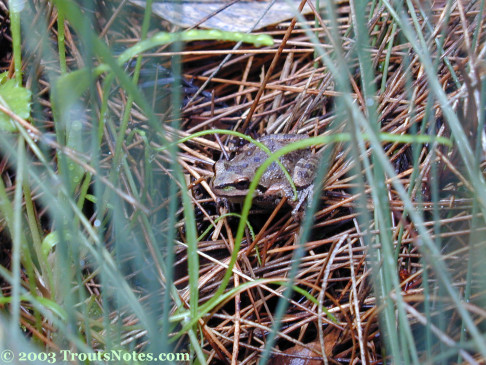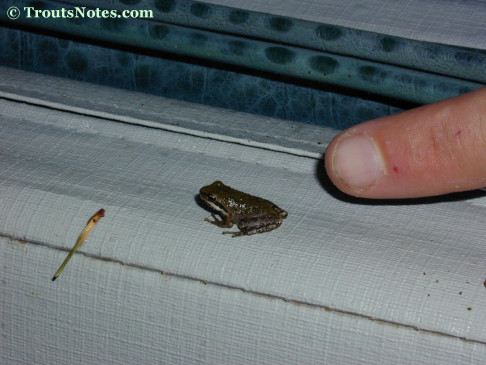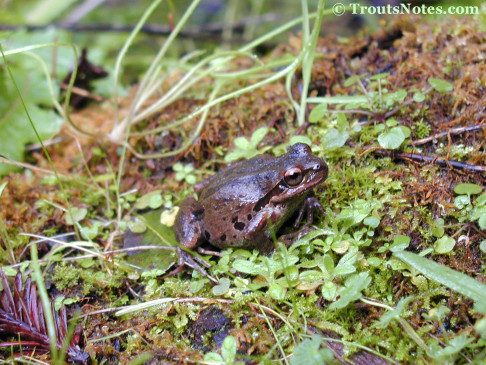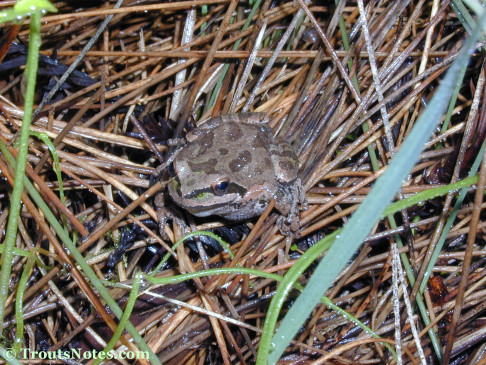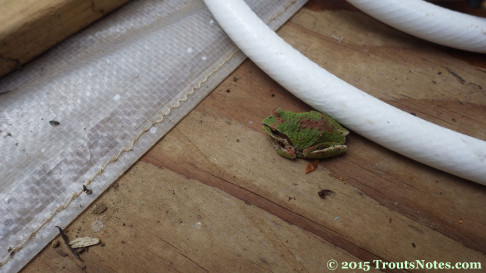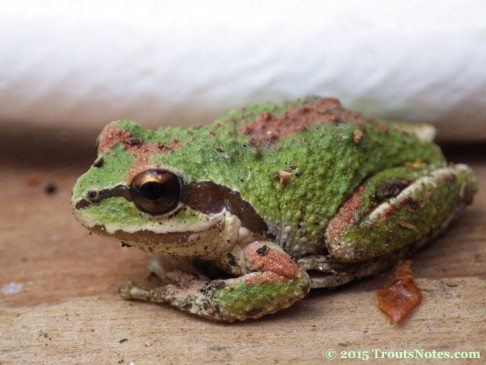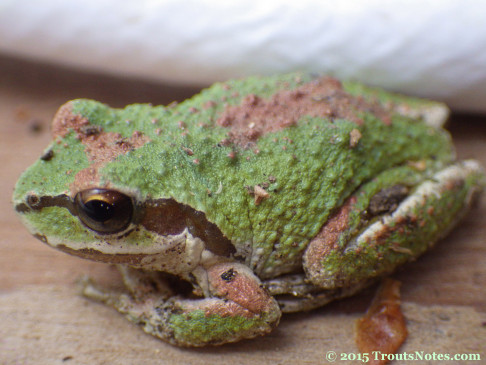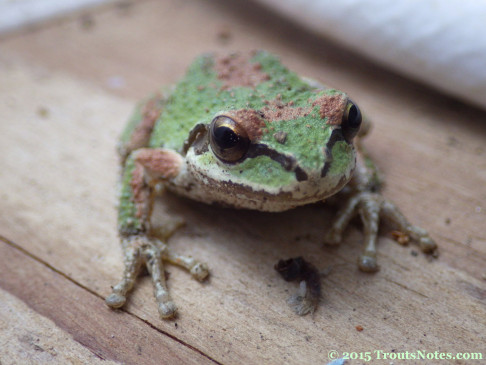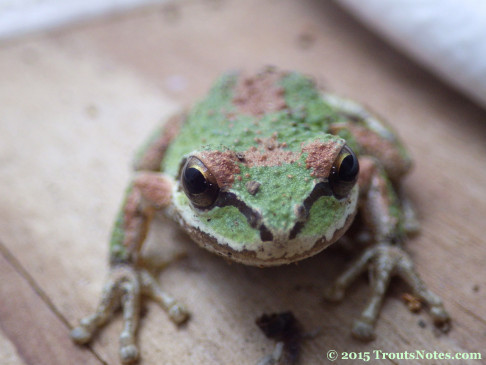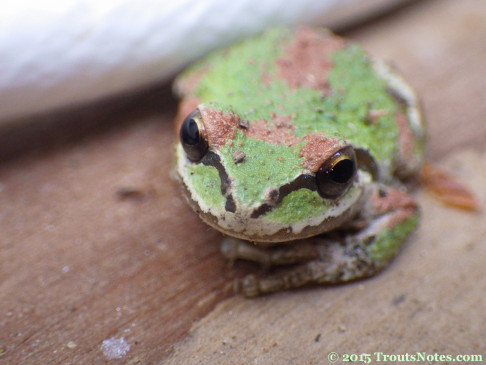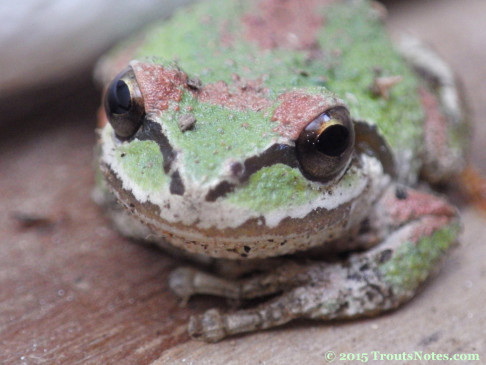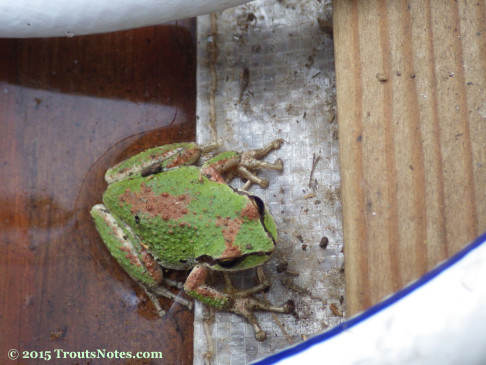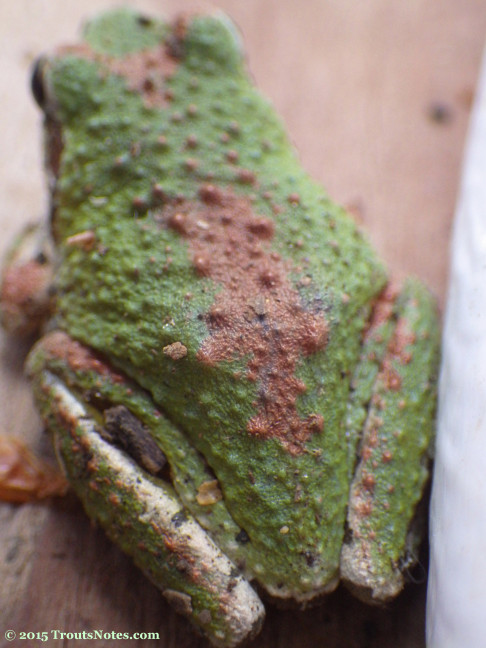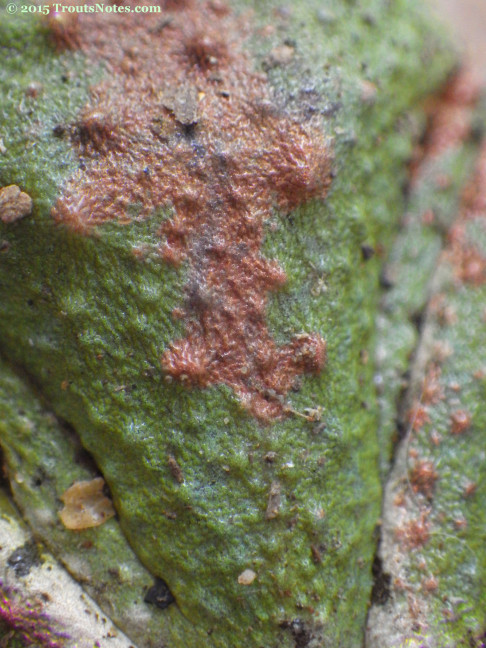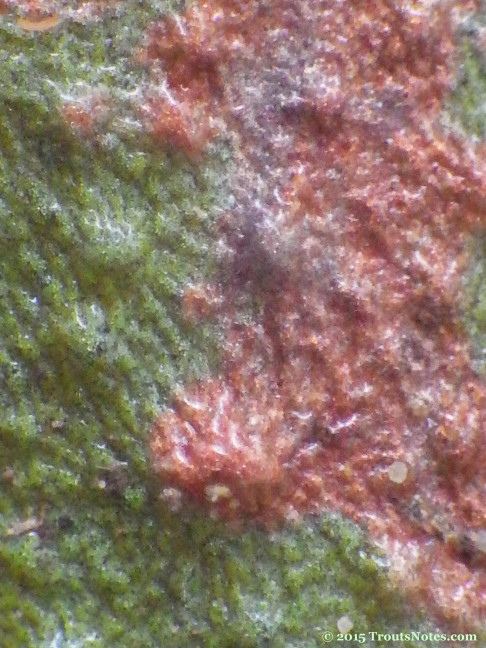The Rough-skinned newt (Taricha granulosa granulosa) following the first real rain of October 2015.
Category: amphibians
Aneides flavipunctatus flavipunctatus
Aneides flavipunctatus flavipunctatus is also known as the Speckled Black Salamander.
They can be solid black like this individual.
Or speckled with yellowish or whitish.
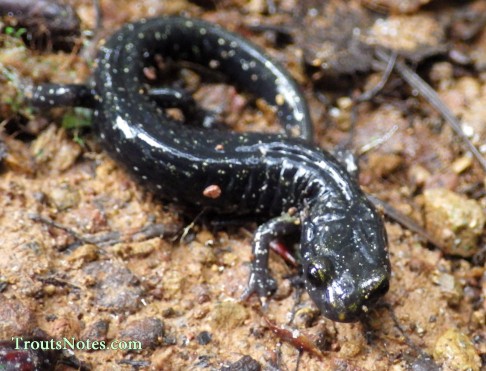
Aneides flavipunctatus flavipunctatus on 3 March 2016
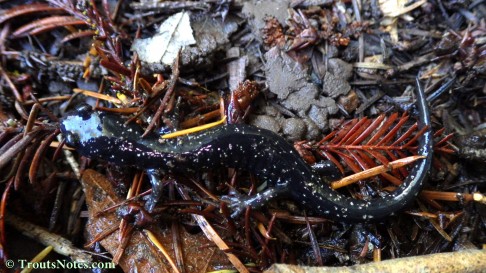
Aneides flavipunctatus flavipunctatus
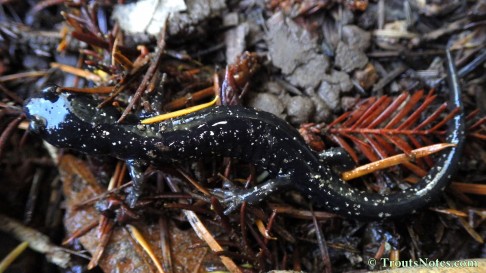
Aneides flavipunctatus flavipunctatus
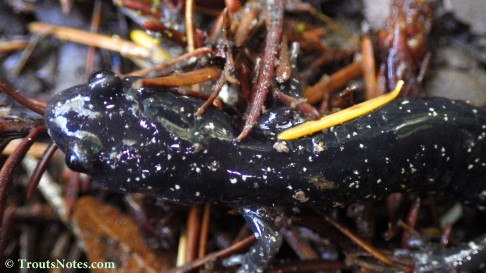
Aneides flavipunctatus flavipunctatus
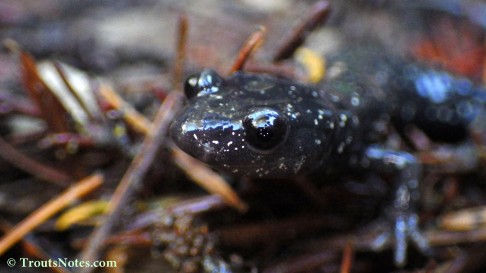
Aneides flavipunctatus flavipunctatus
Acris crepitans
Acris crepitans is also known as the Pacific chorus frog.
This used to be called the Pacific tree frog but someone sensibly decided that it was not an appropriate name since they do not live in trees. I’ve seen them use a puddle of water in the hollowed crotch of a tree branch for raising a crop of tadpoles but it is far more common to find them hanging out next to a clump of grass. This image shows what is the most probable place here to locate a singing frog.
The name Pacific chorus frog is much more appropriate as this animal may have the most commonly heard frog song in the entire world. Not due to being distributed worldwide but rather for sake of being chosen to be the “typical” sound of frogs used in movies, television and recordings wanting the sound of frogs singing in the background.
These frogs have a fascinating habit of not using permanent or flowing sources of water for egg laying. Instead they select temporary puddles and accumulations following rains. They manage to do this by maturing fast and really small; and then increasing substantially in size.
Every frog on this page is this species and was found within a couple of hundred meters of each other. Sizes are variable due to what was just mentioned. The color is chamaeleonoid in that the color changes between browns and greens. Unlike chamaeleons and anoles the color of these frogs does not change in response to their background changing but rather it is temperature dependent (so the frogs have to change their location to fit their color).

